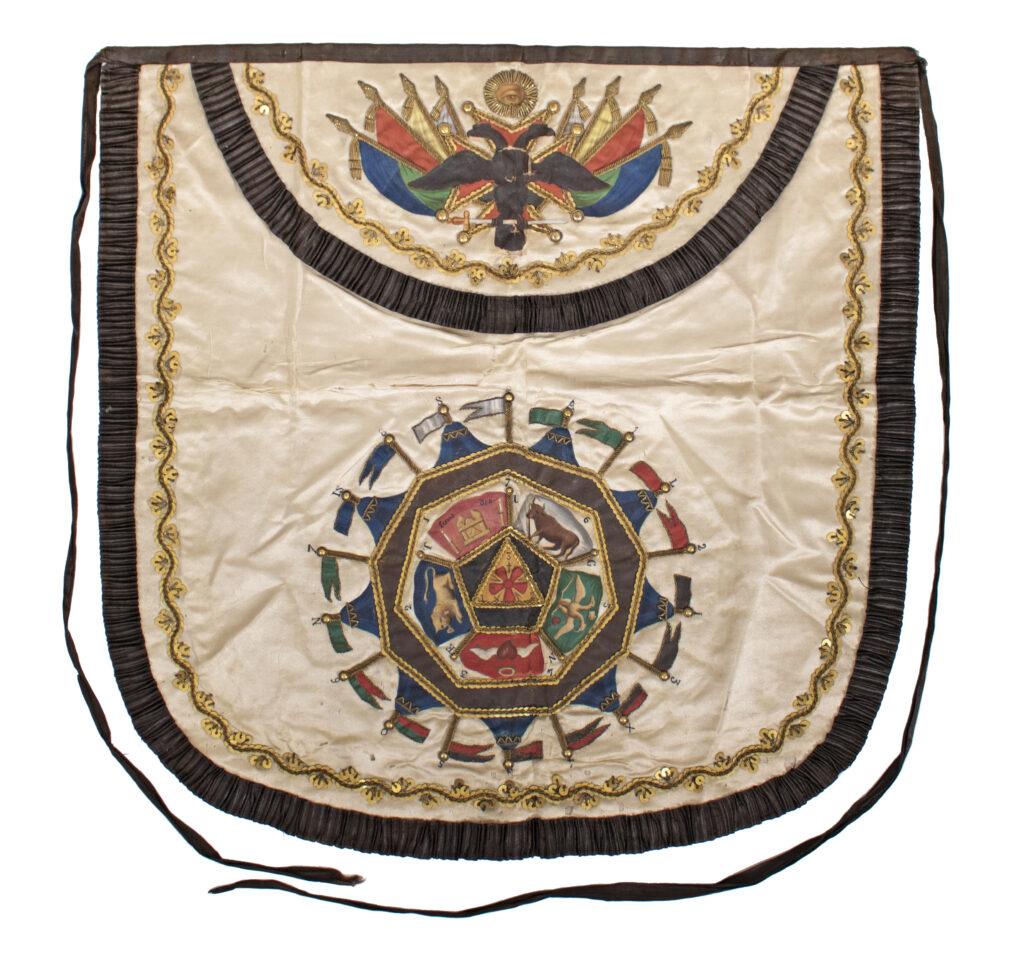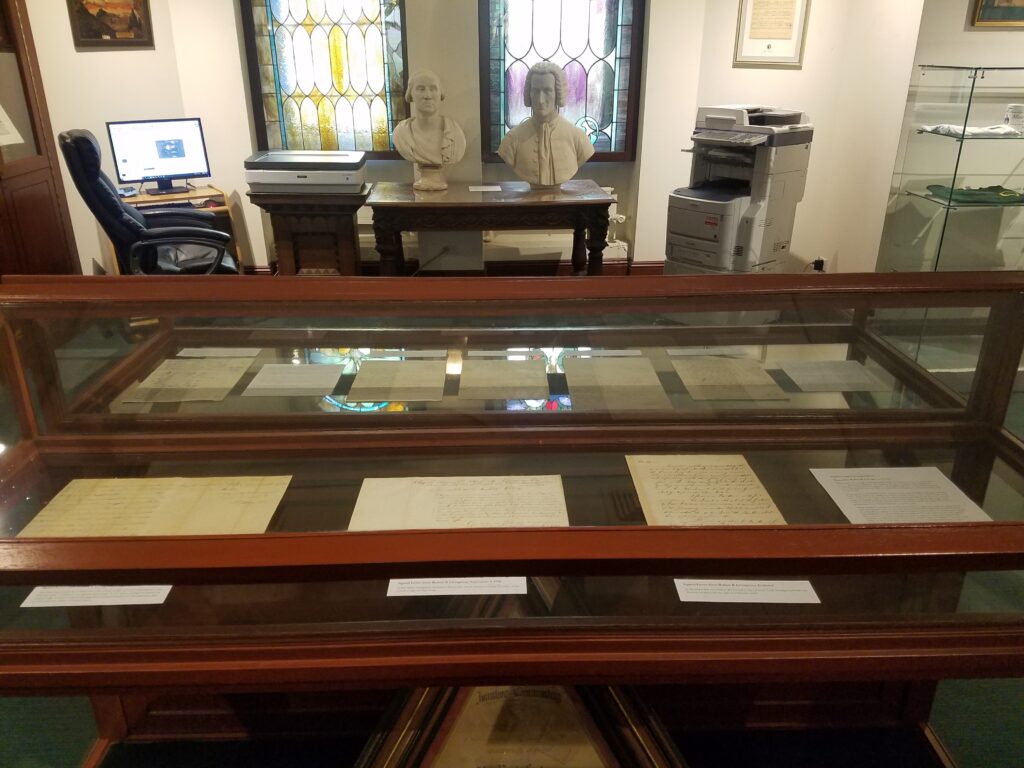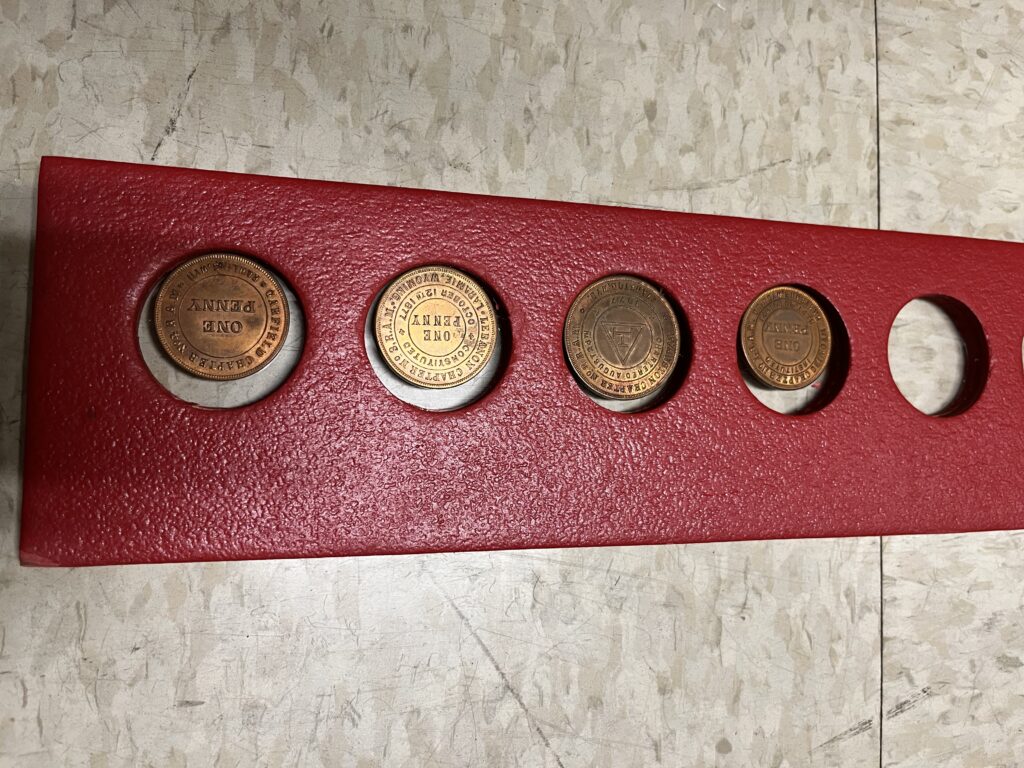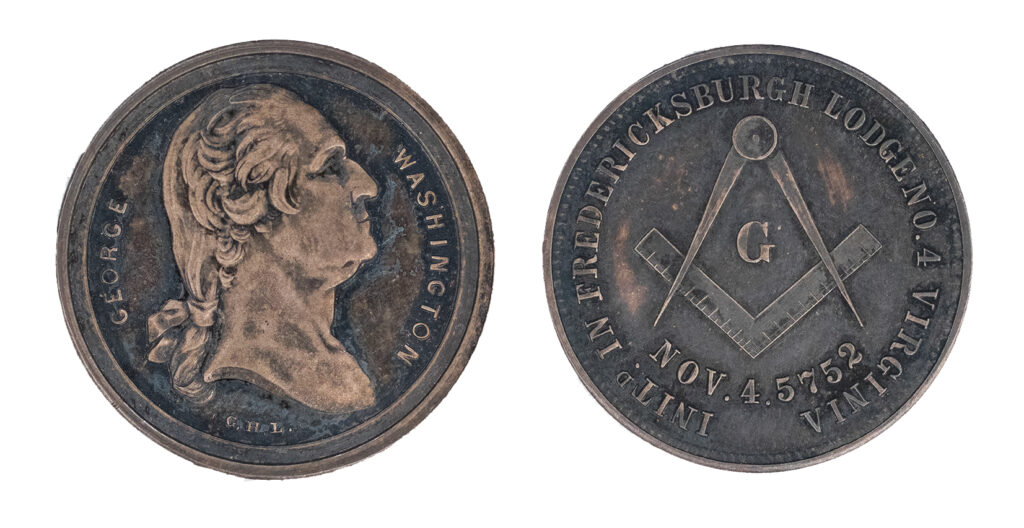In our photograph collection, I stumbled upon the photograph of a gentleman name Edward Giddings among the portraits of high-profile Masons from the mid-late 19th century. I was not aware of who Edward Giddings really was until the research revealed that he was one of the important players of the Morgan Affair and anti-Masonic movement.
To summarize the Morgan Affair in 1826, it was the murder mystery that ultimately led to the anti-Masonic frenzy which almost destroyed Freemasonry in North America. It all began when William Morgan, or Captain Morgan, announced his publishing of Illustrations of Masonry, claiming to expose the secrets of Freemasons to the public. Morgan later vanished and was never found again. He was last seen in Canandaigua being taken into the carriage right after being released from debtor jail.
When Morgan didn’t come home, and Mrs. Morgan began searching for her disappeared husband, the rumors, the conspiracy, and the sensation began to spread throughout New York. While there has been no solid account of what really happened, the most popular consensus is, Morgan was allegedly abducted and murdered by the members of Masonic Fraternity. The scandal had spread far and wide, leading the country into the hysteria of the Anti-Masonic movement.

Edward Giddings, at the time, was a Mason, and the lighthouse keeper at Fort Niagara, and he was one of the prime witnesses of Morgan’s final moment, as the popular theory being Morgan was murdered by drowning in Niagara River. Ironically, his testimony was not believed and was rejected by the court based solely on his atheism.
Despite this, Giddings later wrote his own testimony, describing his involvement in the scene in the Anti-Masonic Almanac in 1829, titled An account of the savage treatment of Captain William Morgan, in Fort Niagara: who was subsequently murdered by the Masons, and sunk in Lake Ontario, for publishing the secrets of Masonry. Although it cannot be proven true, the Anti-Masonic movement was more than eager to weaponize his testimony against the Masons.

Later, the other photograph in the collection also caught my attention. It is a portrait of Giddings next to Rob Morris, the distinguished Masonic author at the time. The story behind Rob Morris being in the same picture with Edward Giddings is the curiosity worth looking into. How and when did they meet?

Rob Morris was the celebrated Masonic author and poet, the Past Grand Master of Kentucky, and the founder of the Order of the Eastern Star. He was known for his several Masonic publications, such as Freemasonry in the Holy Land, The lights and shadows of Freemasonry, The level and the square, and one of them is William Morgan or political anti-masonry.
I looked into William Morgan or political anti-masonry, as my hunch is Morris might include the backstory of these photographs in his Morgan Affair publication, and I am correct. In the book William Morgan or political anti-masonry, published in 1883 by Macoy Publishing, Morris wrote the account of his personal investigation on Morgan’s disappearance. His search for the truth eventually led him to meet Edward Giddings in person at Lockport, New York in 1861. There is no doubt that the two photographs of interest were taken during their brief encounter.
In his book, Morris, understandably, held some resentment toward Giddings as he questioned his atheism belief and described Giddings as a deceiver who made up his testimony for fame and money, not to mention how much his ‘testimony’ had hurt the Freemasonry and many of its members. As they discussed, Giddings confessed to Morris that, the truth was, he did not see nor know what actually happened to William Morgan in his final moment.
According to Morris, Giddings was raised in a lodge in Boston around 1810 despite being an atheist. Giddings admitted to him that he lied about his religious faith upon initiation into Freemasonry, and he had so little commitment to the craft as a result. Giddings died in 1862, a year after they met, at Fort Niagara, New York, at the age of 77.
Rob Morris was one of the biggest contributors of the Grand Lodge of New York’s collection. His several Masonic portraits and publications are the valuable resources for research and education of American Masonic History. This little discovery in the Grand Lodge collection really pique my interest, and I am pleased to share its story in this blog post.
Reference
Morris, Robert. William Morgan, or, Political Anti-Masonry: Its Rise, Growth and Decadence. R. Macoy, 1883.

















































